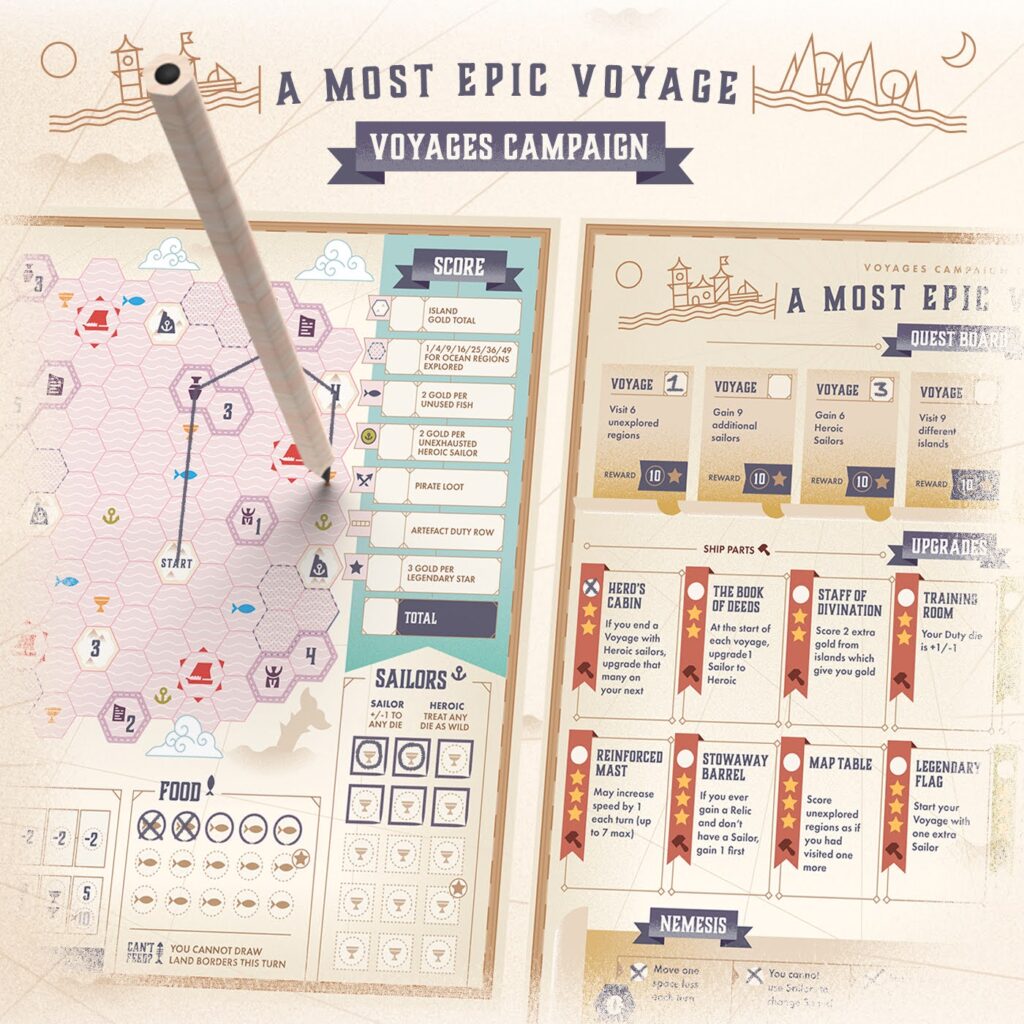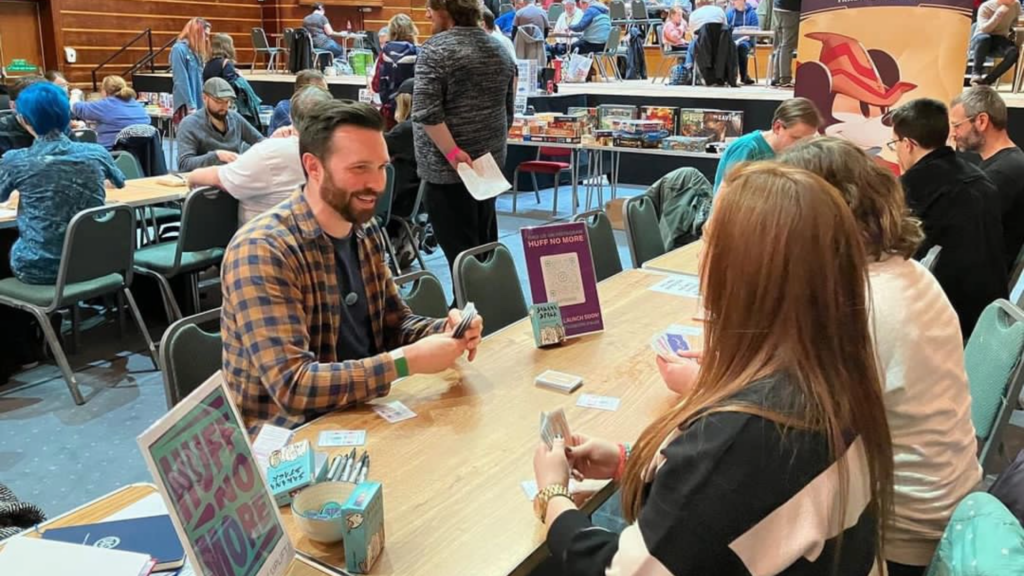I’ve been exploring the world of Print and Play games recently, and even trying my hand at designing a few. As I explored, I found an incredible world filled with brilliant designers, incredible creativity and amazing games. I thought I’d bring some of those designers together to share their perspectives on the genre. This is Part 1 of a two-part blog on the topic, part 2 is here!
There are 4 wonderful games designers contributing to this first post, if you’re not sure where to start role the dice!
Rory Muldoon | Postmark Games | @postmark_games
I think one of the wonderful things about Print and Play / Print at Home gaming is its ubiquitousness. Manufactured boxed board games can be expensive, and things like small print runs and high import fees mean they aren’t always available to the people that want to play them. Games that you print yourself remove a lot of those boundaries and whilst they require some commitment in terms of printing and crafting, the actual act of acquiring them is vastly more accessible.
Part of our design process at Postmark is to lean into this accessibility. Print at Home games can’t compete with the component quality or table presence of physical games but they can do something that those games can’t, and that’s to easily provide the player with new content. As an example, our game Voyages has 6 unique maps and a campaign mode, all of which we were able to distribute to our customers at no additional cost.

This ability to easily provide players with new content is something more closely aligned with video games than with traditional board games. There’s an immediacy to printable games that isn’t possible with a manufactured product and I think we’re only scratching the surface of how that can be leveraged. If you haven’t yet dipped your toes in the water of printable games, I’d encourage you to check out PNParcade.com, and our own website postmarkgames.com. You can also check out our upcoming game 52 Realms: Adventure on Kickstarter.
Rômulo Machado | Reaver Workshop | @reaver_workshop
I think the genesis of what we call Print and Play today is in the childhood of everyone who had that bright moment of creativity and fantasy, and innocence in the past. Talking about me, personally, I didn’t have board games when I was a child, but I loved those labyrinth, fill the dots, crosswords, coloring pictures and many other stuff we had in some magazines, and from times to times there were some little games, or cards and paper trinkets which came in some candy… I remember drawing and cutting some paper and creating some fantastic worlds in my mind, some games without any sense and logic, hahah, but I played them alone and had a lot of fun in these childhood moments… Do you remember something similar?
Then we grow up, encounter video games and board games and connect ourselves with that… In my case I was always more connected with computer games and video games instead of board games. I don’t own any board game today. But the first time I saw the Joquinhos Hard YouTube channel (he is the greatest enthusiast of PnP in Brazil), I was fascinated by this thing of crafting your own game and playing it the way you want, and specially the fact there were small and quick games.

I work full time in two jobs, so I don’t have the time and energy for larger games, nor the money to buy them, but print and play games made me see that there is something which fits my lifestyle and, since I work as a graphic designer, it inspired my to use my skills in creating my own games. Then getting back to the first paragraph, the way PnP games arrived in my life brought back some light of those happy days of fantasy and rich imagination from my childhood. That’s why I called my label Reaver Workshop, although Reaver means someone who steals (since I believe nothing we create is fully original), Reaver also means in Brazilian Portuguese “to see again” “to revisit”. You can check my games here: https://reaver-workshop.itch.io/
Benny Sperling | Roll and Write Revolution | @RollAndWriteRevolution
Print and play games have given me an opportunity to make so many different and varied games over the last 4 years, I struggled for a long time to figure out what to do with my game ideas. Then I saw a publisher who sold a game on kickstarter as a print and play. I immediately thought “Aha! There is a way to do this!” In my time doing it, I published games of my own, but also a number of games from other designers helping games they had find players who would like them. It’s something that I will always be grateful for. The community around print and plays is second to none. They are eager to support those odd little games that likely wouldn’t get signed to be a boxed game. These games are like little treasures. A few resources and suddenly the game is ready to go. Some are more elaborate than others, we did a game called Pipefitters that is a deck building game with a map the players draw water pipe routes on. Others are simple like Wild, Wild West which is a single page. Print and play games were the way to actually publish a lot of my ideas. In fact, a lot of designers are moving into making print and play games. The games are gaining traction in the board game industry and as they grow, so too grows the opportunities. A parallel that might be worth considering is the growth of artists with the advent of sound cloud and cheaper software that let artists record and produce music on their own. It’s led to a boom in creativity and artists are finding audiences.
To me, print and play games are the ultimate expression of creativity.
To me, print and play games are the ultimate expression of creativity. They have no bounds as far as components, the themes can be anything the designer is interested in, and art can be had which is not that expensive or even free. It eliminates a lot of the barriers designers might otherwise experience. Also, the designer can run a kickstarter or use itch.io or similar to promote their game. I’ve had wonderful chats with designers who have made the leap to print and play games. They’re delightfully surprised by the results. They’re games are readily available and stack up with every board game that’s been published to date.
For the audience too, print and play games represent a chance to play games with themes or mechanisms they might not otherwise get to play, but there is also cost to be considered. A print and play game will give them the files which they can use to make the game. For folks who like making things, this is a really fun endeavour. Like having a pattern for crocheting a new scarf, but this time they’ve made a game and they’ll be able to share with friends and family. And who knows, those games may inspire even more designers to try their hand at making a game! Thanks for reading my thoughts on print and play games, and if you’re so inclined, check out my games on the Game Crafter or on kickstarter. And if you’re a designer or aspiring designer and want some tips on getting started, feel free to reach out on instagram.
James Wendelborn | I’m Not Shouting | @im_not_shouting
Living at the arse-end of the world (New Zealand) means there’s a lot of games I add to my cart and then don’t buy because of the cost of shipping once they see where I am. What I love about PnPs is that pretty much anyone can access them anywhere in the world. They democratise the hobby.
I didn’t actually intend to create a PnP, but it fit the of my game, Billionaire Bunker, so well – two sides, one building a bunker on their sheet, and other building a guillotine on theirs. I also loved the idea of the Civilians ‘invading’ the Billionaire’s sheet at the end – it felt so thematic and unique for a PnP, which can be less interactive than other types of games.

I did a lot of research on what the current market for PnPs was like, and there’s so much cool stuff happening. I think a lot of designers have turned to making PnPs to avoid the stress of worldwide shipping and manufacturing, but the result is more interesting voices entering the space. Tabletop gaming in general is in a really interesting place where people are really pushing the boundaries not only mechanically but thematically of what can be a ‘game’ – I mean, check out what Amabel Holland’s been doing for instance. I’m really excited to see what comes next.
A huge thank you to today’s contributors, make sure you seek them out on Instagram and follow their incredible work. This is just Part 1 of our exploration into Print and Play games, read Part 2 here.
Sign up and you’ll also get a free Print and Play game!



Pingback: The wonderful world of Print and Play games: perspectives from the experts (Part 2) | What If Games
Pingback: Making Beautiful Objects: Rory from Postmark Games on Design Partnerships and the Art of Print & Play Games – What If Games